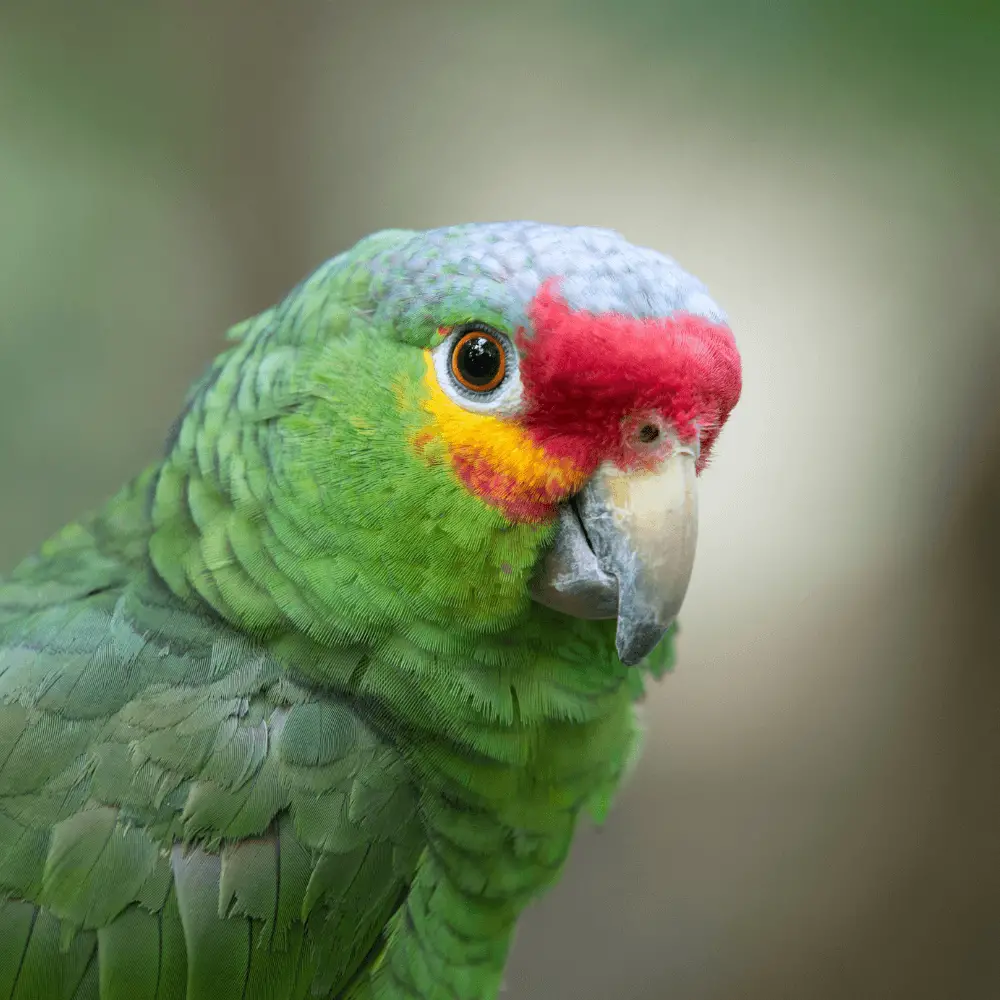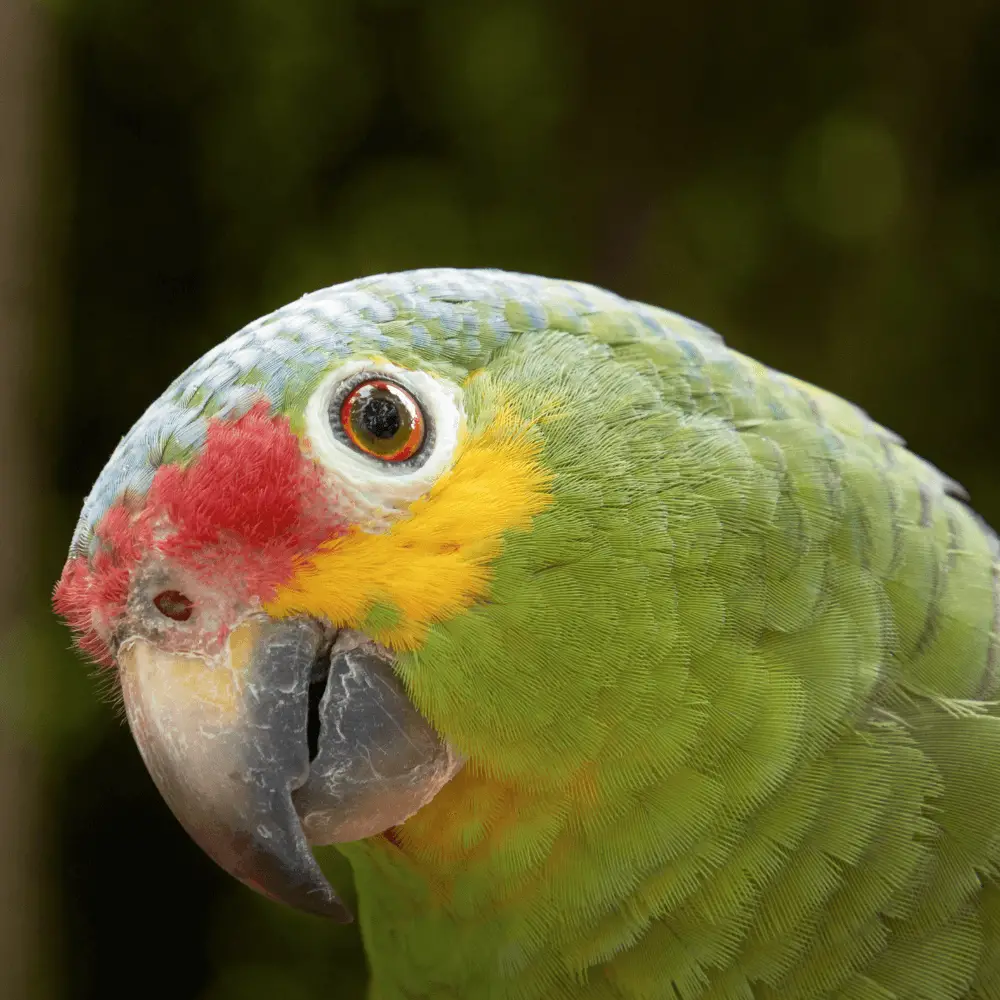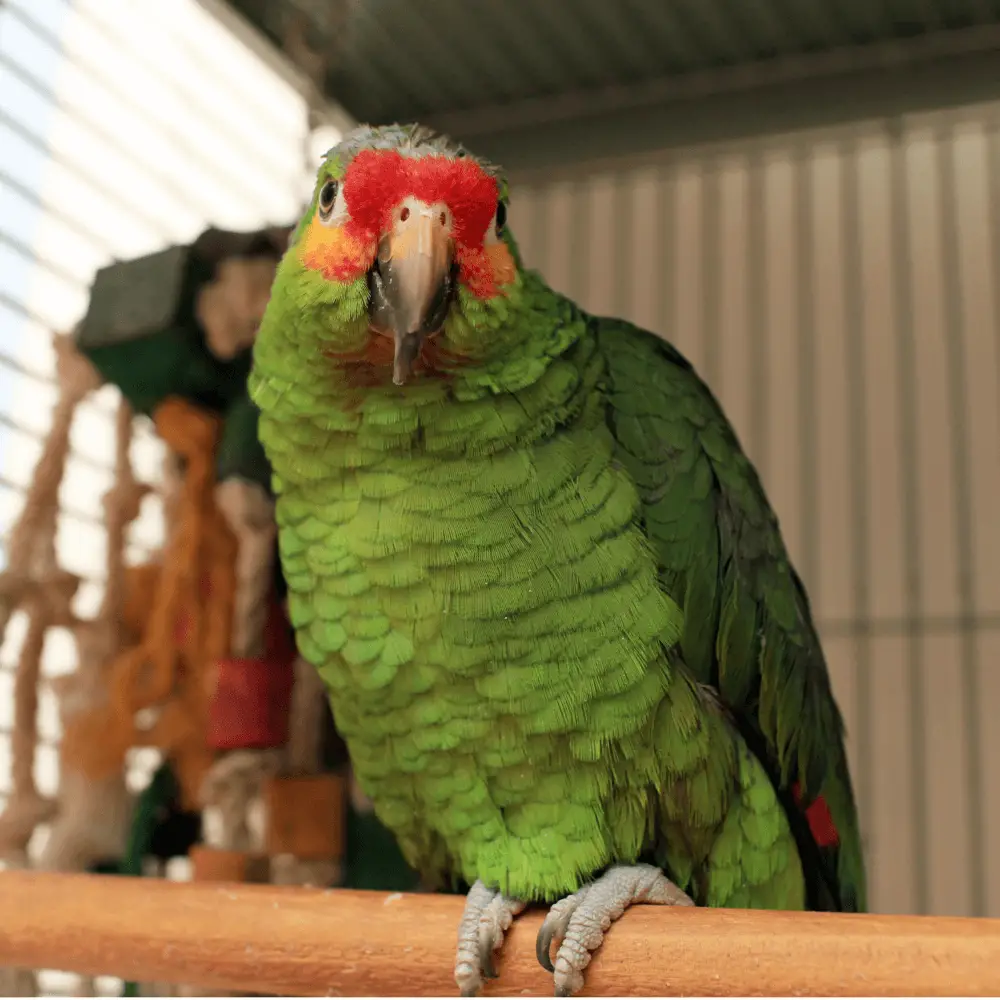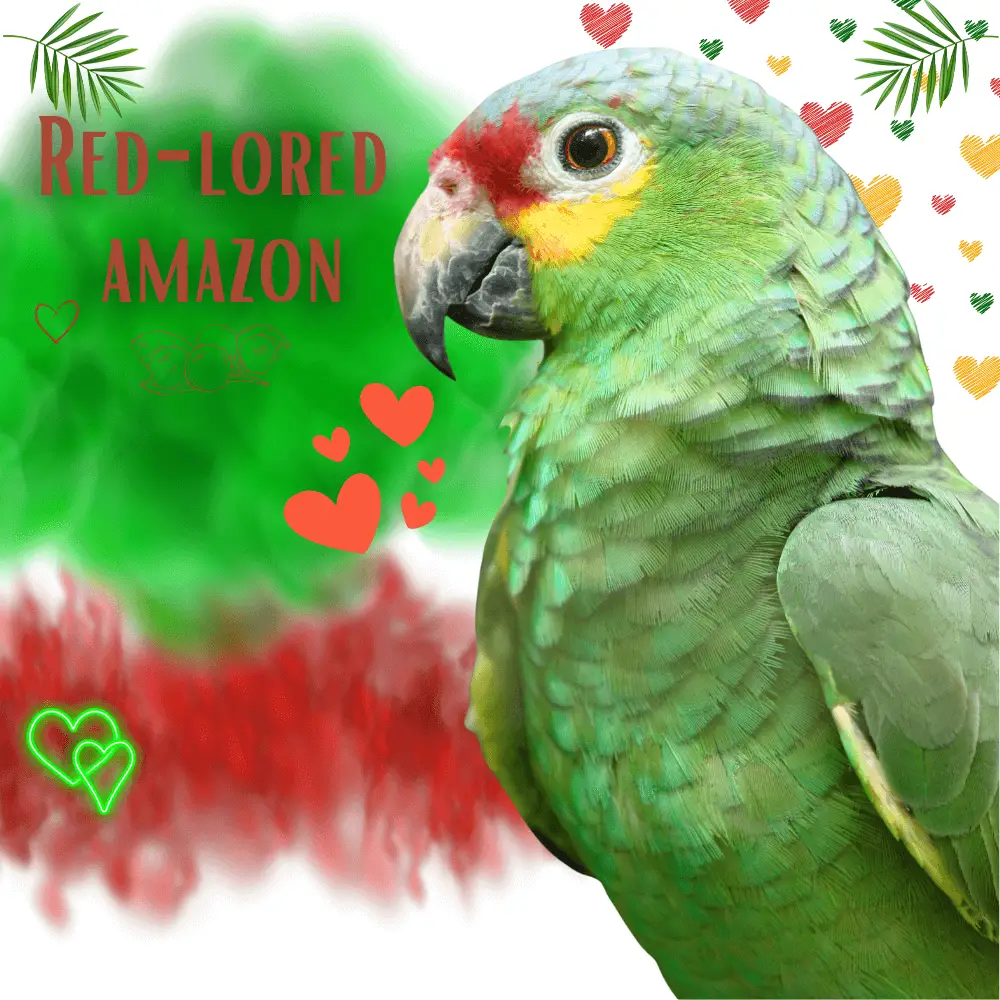Red-lored Amazon: 35.5 to 38.1 cm. height and between 314 and 485g. weight. (Amazona autumnalis) is distinguished by its red facade; Green with a purple border on the nape; spot in red on the wing; coronilla lilac, and Yes tail with a blue margin.
The woodpecker is gray in color with the upper jaw a beige horn color. The iris of his eye is orange. The legs are of a greenish-gray color.
They do not possess sexual dimorphism, that is, there is no physical difference between male and female.
- Order : Psittaciformes
- Family: Psittacidae
- Genus: Amazona
- Scientific name: Amazona autumnalis
- Citation : ( Linnaeus, 1758)
- Protonimo: Psittacus autumnalis
-
Belize, Brazil, Colombia, Costa Rica, Ecuador, Guatemala, Honduras, Mexico, Nicaragua, Panama, Venezuela
-
Loving and Loyal
-
27 years
-
35.5 to 38.1 cm.
Red-lored Amazon habitat

This Amazon frequents a wide range of wooded and open tree habitats, including rainforest, tropical deciduous forest, pine forests, mangroves, forest swamps, gallery woods, cultivated land with tall trees and plantations; also in southern dry forest Ecuador.
The Red-lored amazon moves from the rainforest (breeding season) to a more open habitat in winter in the Yucatan Peninsula, Mexico. The altitudes that inhabit range from sea level to 320 meters in Oaxaca, 1,100 meters in Honduras, 800 meters in the Caribbean, 1,000 meters on the slopes of peaceful Costa Rica, and Yes 1,000 meters in Colombia.
The birds tend to be in pairs or in loose flocks, being more gregarious when food (occasionally Macaws) and when they are. outside the breeding season, the birds take refuge in the tall trees of gallery forests or mangroves.
Distribution
The Red-lore amazonextends from southern Mexico to northern South America with an isolated population in the Amazona.
You can find in the lowlands of the CE of Mexico, in the south of Tamaulipas, in the east of San Luis Potosí, Chiapas, Tabasco, Puebla, Oaxaca, Campeche Yes Quintana Roo.
Records from other parts of the country (eg, Mexico City ) likely hint at leaks. You can see it inBélice and in the lowlands of the Caribbean from Guatemala Y Honduras (including Roatan Y Guanaja in Bay Islands and probably before in Utila ), to Nicaragua Y Costa Rica, where they are present in the wetlands of the tropics on both slopes (absent from the dry Northwest ), also in Panama and on the islands of Coiba Yes Shield of Surco and in the Pearl Archipelago (absent from the drier areas of this Azuero Peninsula ).
In the northwest of Colombia appear on the Pacific slope of the western Andes From the border of Panama to the south until Serranía del Baudo and from the southwest of Cauca to the south Equator in the Gulf of Guayaquil. It also extends north from the Andes in Colombia up to the middle Magdalena and to that in the northwest of Venezuela in Zulia ( Sierra de Perijá ).
In the basin northwest of the Brazilian Amazon, an isolated population exists between the Black River and Solimões River.
Usually residing with certain preferences in the local seasonal habitats (for example, in Yucatan Peninsula, Mexico ). Is usually the most common parrot and more numerous in some parts of the range (for example, in parts of Central America ) but now is a very rare species from the Andes in Ecuador Yes Colombia with a population of sub-species Amazona autumnalis lilacina estimated in 400-600 copies.
The population decreased considerably in the island of Roatan ( Honduras ) when it was captured massively for export, and may be lacking in Utila for the same reason.
Subspecies

Amazona autumnalis autumnalis: ( Linnaeus, 1758) – Nominal, ( Linnaeus, 1758) – Nominal. Caribbean coast from the east of Mexico South to the north of Nicaragua.
Amazona autumnalis lilacina: ( Lesson, 1844) – He lays out a red stripe on the front that it stretches over their eyes; yellow cheeks,( Lesson, 1844) – West of Ecuador.
Amazona autumnalis salvini: ( Salvadori, 1891) – He has cheeks Yes ears of the green helmet; the base of the tail by under red,( Salvadori, 1891) – North of Nicaragua South of Colombia Yes Venezuela.
Red-lored Amazon parrot breeding
They nest during the dry season in hollow trees (usually dead, for example, Tabebuia o Ceiba ) or on the trunk of a palm tree. Birds in breeding status in April, Oaxaca; February-March, Bélice; March, Guatemala; January-February, Colombia. Breed between February-April, Panama; March-May, Bélice and January-March, Ecuador. Clutch 3-4 eggs.
The incubation varies from 25 to 26 days. The chicks remain in the nest for 70 days.
What do Amazon parrots eat
In the wild, these parrots feed on ficus figs, oranges, mangoes, palm fruits (including Cordia lutea Yes Spondias purpurea ), coffee beans ( Coffea arabica ), Clamping Ring seeds, Casearia Yes Protium. It feeds mainly in the canopy of tall trees.
Conservation

• Current IUCN Red List Category: Least Concern.
• Demographic trend: Degressive.
This species has a very wide range so is not close to Vulnerability thresholds at the discretion of the size of the distribution area.
The population size is very large and, therefore, does not approach thresholds for vulnerable under the population size criterion (<10,000 mature individuals with an estimated continuing decline of >10% in ten years or three generations). or with a specific population structure).
It is suspected that the population is declining due to ongoing habitat destruction and unsustainable harvesting levels.
Red lored amazon talking
SOURCE: Airtime359
Red-lored Amazon as pet
It is vitally important that the diet is complete and balanced in all directions, as this would prevent, along with other factors, the occurrence of bone problems or the known software that affects many parrots.
To guarantee the balance of this, the prepared feed very well the nutritional needs of each animal, however, they should not lack plants, fruit and vegetables, as well as the diversity of seeds that come in the mixture.
With regard to housing, If they are not removed from the cage permanently, it must be spacious enough to exercise the muscles of the wings and legs, and the plumage of the bird is kept in perfect condition.
The Red-lored amazon enjoys, like all parrots, tearing up and discovering things, so they must have the occasional toy or we may end up having trouble with furniture. Parrot feet are perfect if your stay is outside the cage.
Of course, they should not be exposed to drafts or sudden temperature changes. The water must be clean within your reach because the existence of fungi causes serious respiratory problems.
With regard to the coexistence of having it in the neighborhood area, in comparison with other species in the Amazon, are relatively calm, so in general do not cause problems.
In captivity, will reach the height of 80 years.
BREEDING AND REPRODUCTION:
Captive breeding began for the first time in the United States, after their importation from the place of origin, South America in the 1950s.
The individuals acquire their sexual maturity at 4 years, and if you have a pair of good reproduction in good conditions, they can carry out two annual broods, Although the main thing if you want to increase, is patience. Many couples need several years before the first calving, so it is very important to be patient and wait for the right moment.
The female lays in the nest (no filling) 2 to 6 incubated eggs without the help of the male, usually. This is dedicated to feeding the female herself and the chicks after their birth at 28 days until independence after twelve weeks.
Related article:

